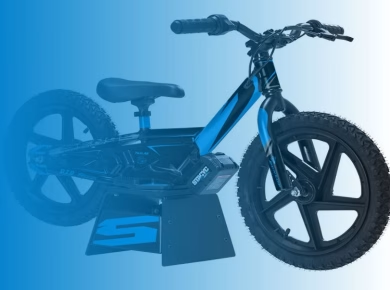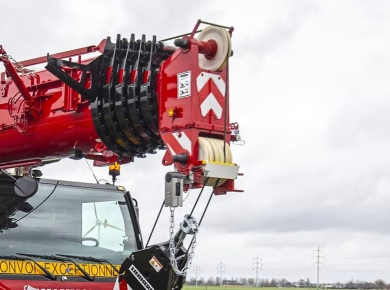When you dive into the world of multi-tool blades, you’re entering a realm filled with choices, each tailored to specific tasks and projects. It’s an exciting journey, whether you’re a seasoned DIY enthusiast or just beginning to explore the possibilities of these versatile tools. In this ultimate guide, we’ll navigate through the myriad types of multi-tool blades available, helping you make informed decisions that will enhance your projects and ensure you get the most out of your multi-tool.
Understanding Multi-Tools and Their Versatility
Multi-tools have become indispensable companions for many. They pack multiple functions into one compact design, making them perfect for a range of applications—from home repairs to outdoor adventures. At the heart of these multi-tools are the blades. Selecting the right blade can significantly affect the outcome of your work.
Each blade serves a specific function, and knowing their differences can save you time, effort, and frustration. Whether you’re cutting through wood, metal, or plastic, there’s a blade designed for the job. But before we delve into the different types of blades, let’s first consider what you need to keep in mind while choosing one.
Key Considerations When Choosing Multi-Tool Blades
When selecting a multi-tool blade, several factors come into play. Understanding these will help you make a choice that aligns perfectly with your needs.
Material Composition
The material of the blade is paramount. Most blades are made from high-speed steel (HSS), bi-metal, or carbide. HSS blades are great for general use and offer good durability. Bi-metal blades combine the toughness of HSS with flexibility, making them ideal for cutting various materials. Carbide blades, on the other hand, excel in cutting harder materials and last longer but can be more brittle.
Blade Type and Application
Different tasks require different blades. For instance, if you’re planning to cut wood, a wood blade with coarse teeth is a must. Conversely, for metal work, a fine-toothed blade is essential. Understanding the specific application will guide you in choosing the right type.
Compatibility with Your Multi-Tool
Not all blades fit every multi-tool. Before purchasing, ensure that the blade is compatible with your specific model. Many manufacturers provide compatibility information, so don’t hesitate to check.
Length and Thickness
The dimensions of the blade affect its performance. Longer blades can reach deeper cuts but may be less maneuverable. Thicker blades are sturdier but may not fit into tight spaces. Assess the types of projects you’ll undertake to decide what length and thickness will serve you best.
The Different Types of Multi-Tool Blades
Now that we’ve covered the key considerations, let’s explore the various types of multi-tool blades available on the market.
Wood Blades
Wood blades are designed with teeth optimized for cutting through timber and other wood materials. They come in various configurations, such as those for fast cuts or smoother finishes. If you’re working on a woodworking project, having a set of wood blades will make your tasks much easier.
Metal Blades
These blades are specifically engineered to slice through metals, whether they are ferrous or non-ferrous. Metal blades typically feature finer teeth compared to wood blades, allowing for precision cuts. If you often find yourself working with metal, investing in high-quality metal blades will pay off.
Universal Blades
Universal blades are a versatile option that can handle a wide range of materials, including wood, metal, and plastic. While they may not be as specialized as dedicated blades, their adaptability makes them a solid choice for those who want a one-size-fits-all solution.
Tile and Grout Blades
If you’re undertaking a tiling project, tile and grout blades are essential. These blades are designed to cut through ceramic, porcelain, and even grout. They help make clean cuts and can also assist in removing old tiles when renovating a space.
Carbide Grit Blades
Carbide grit blades are fantastic for tougher materials like cement board or fiberglass. They are built to withstand heavy wear and tear, making them ideal for demolition projects or heavy-duty applications.
Detail Blades
For intricate work or precision cuts, detail blades are invaluable. They typically have fine teeth and a narrow profile, allowing for detailed work in tight spaces. These blades are perfect for artistic projects or when you need to make precise cuts.
Maintenance Tips for Multi-Tool Blades
Once you’ve selected the right blades for your projects, it’s crucial to maintain them properly. Proper maintenance not only extends the life of your blades but also enhances their performance. Here are some tips to keep your blades in top shape.
Cleaning
After each use, clean your blades to remove any debris or residue. This prevents build-up, which can affect cutting efficiency. A simple brush or cloth usually does the trick. For tougher build-up, a solvent may be necessary, but always check the manufacturer’s recommendations.
Storage
Proper storage is key to blade longevity. Store blades in a dry, cool place and consider using blade protectors or cases to prevent them from dulling or getting damaged. Keeping them organized also helps you find the right blade quickly when you need it.
Sharpening
While many multi-tool blades are designed for durability, they will naturally dull over time. Sharpening them can restore their cutting power. Invest in a good sharpening tool or take them to a professional, especially for high-quality blades that are worth the investment.
Conclusion: The Right Blade for Every Project
Choosing the right multi-tool blade can transform your projects, making them more efficient and enjoyable. By understanding the various types of blades and their applications, you can equip yourself with the tools needed for success. Remember to consider the material, compatibility, and specific project requirements when selecting your blades.
With proper maintenance, your multi-tool blades will continue to serve you well for years to come. Embrace the versatility of multi-tools and explore the endless possibilities they offer. Whether you’re cutting, sanding, or scraping, the right blade is just a decision away, ready to help you tackle your next project with ease and confidence. Happy crafting!


